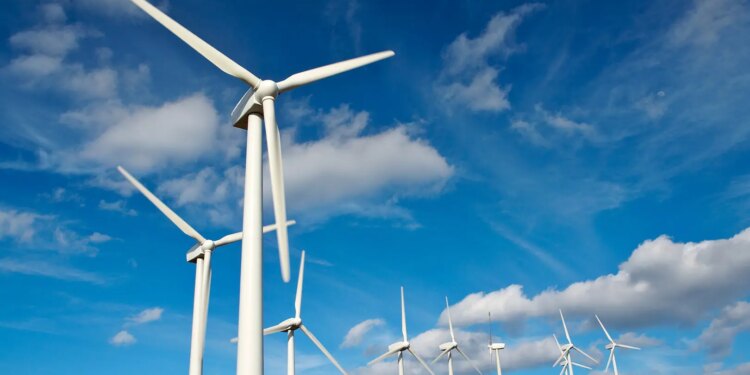The Chokecherry and Sierra Madre Wind Energy project is a wind farm currently being built in Rawlins, Wyoming. With an estimated cost of US$5 billion, it is set to become one of the largest wind farms in the world. If completed as planned in 2026, it will also be the largest wind farm in the United States. The project is being developed alongside the TransWest Express transmission line, which will transmit power to the California market. Most of the project is situated on public land. Originally scheduled for completion in 2020, delays in permitting, environmental considerations, and construction pushed the deadline to 2026.
Also Read: Funding secured for construction of new Riverton Hospital in Wyoming
Around 2005, the Power Company of Wyoming (PCW) began preparing the property in Carbon County, Wyoming for the installation of approximately 1,000 wind turbines. This property, known as The Overland Trail Ranch, is located in a former coal mining region.
To assess the wind resources available in the chosen location, PCW erected 10 test turbines in 2007. Wyoming is following in the footsteps of states like Iowa, Kansas, Oklahoma, and Texas by harnessing its significant wind resources for this project.
Generation Capacity of the Chokecherry and Sierra Madre Wind Energy Project
The Chokecherry and Sierra Madre Wind Energy Project is expected to generate between 2,000 and 3,000 megawatts (MW) of power. The project is projected to have a lifespan of 30 years. Upon completion, there will be approximately 1,000 wind turbines covering about 0.5% of the ranch’s vast 320,000 acres, which spans the Continental Divide.
Phase I of the wind farm was initially planned to be developed between 2016 and 2019, with Phase II scheduled for construction between 2022 and 2023. As of 2019, the project is expected to be completed by 2026. A transmission line will be constructed to deliver power to California, potentially assisting the state in meeting its renewable energy goals by 2030.
Wyoming experiences increased wind activity throughout the day, particularly in the late afternoon when there is higher electricity demand. This is different from states like Texas and Iowa, where winds tend to blow more at night. The region where the wind farm is situated benefits from Class 7 winds, with a wind capacity factor of approximately 46%. The initial phase of the project is estimated to produce 6 terawatt-hours (TWh) of energy annually from the 1,500 MW capacity. To take advantage of calmer daytime winds, PCW plans to erect the turbines at night.
Closing Statements:
Frequently Asked Questions (FAQ)
1. Where is the Chokecherry and Sierra Madre Wind Energy project located?
The Chokecherry and Sierra Madre Wind Energy project is located in Rawlins, Wyoming.
2. What is the estimated cost of the project?
The estimated cost of the project is US$5 billion.
3. When is the project expected to be completed?
The project is currently scheduled to be completed in 2026.
4. How much power will the wind farm generate?
The wind farm is expected to generate between 2,000 and 3,000 megawatts (MW) of power.
5. What is the projected lifespan of the project?
The project is projected to have a lifespan of 30 years.
6. How many wind turbines will be installed?
Approximately 1,000 wind turbines will be installed in the project.
7. What is the land area occupied by the wind farm?
The wind farm will cover about 0.5% (1,500 out of 320,000 acres) of the ranch’s land.
8. Will the project help California meet its renewable energy goals?
A transmission line will be built to deliver power to the California market, potentially assisting the state in meeting its renewable energy goals by 2030.



